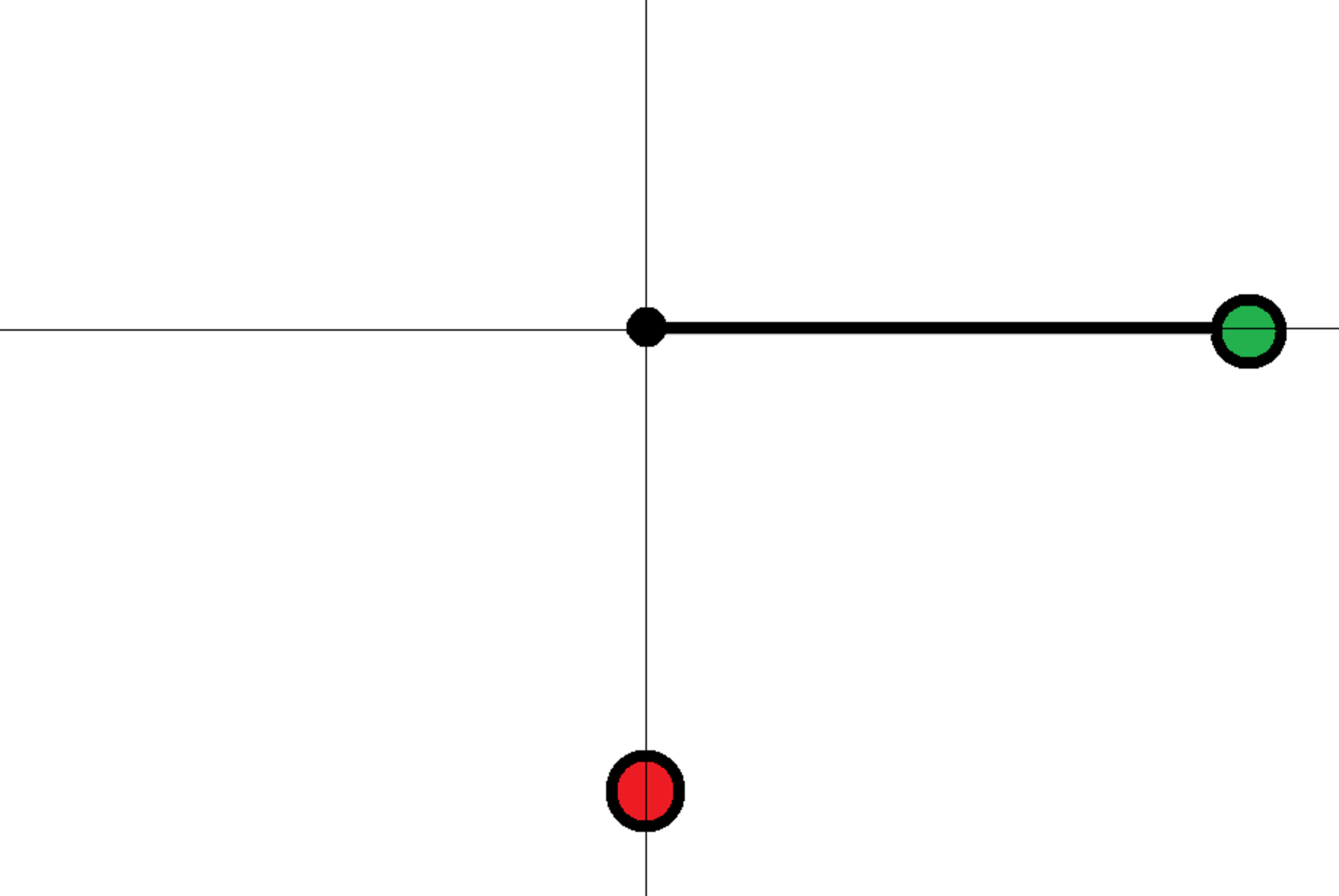Charge Seesaw 3
A particle of mass and charge is attached at one end of a massless rigid rod of length . The other end of the rod is hinged at the origin of the plane, such that the rod can rotate freely about the origin. There is another particle of charge fixed at position . The Coulomb constant is .
At time , the rod is at rest, and it is parallel to the axis. Find the time period of the rod's motion.
Details and Assumptions:
1)
2)
Neglect all forces except for the standard electric Coulomb force

The answer is 14.307.
This section requires Javascript.
You are seeing this because something didn't load right. We suggest you, (a) try
refreshing the page, (b) enabling javascript if it is disabled on your browser and,
finally, (c)
loading the
non-javascript version of this page
. We're sorry about the hassle.
This problem, just like the previous ones can be easily solved using the method of equipotential points. This time, it is apparent that the rod oscillates between θ = 0 and θ = 1 8 0 ∘ . However, I have taken a deliberate numerical approach to demonstrate a partial non explicit computation of Lagrange's equations of motion:
Consider the rod to be at an angle θ at a general time t . The position vector is:
r = ( cos θ , sin θ ) ⟹ v = ( − θ ˙ sin θ , θ ˙ cos θ ) r p = ( 0 , − 1 )
Potential energy:
V = ∣ r − r p ∣ k q 2
Kinetic energy:
T = 2 m ∣ v ∣ 2 = 2 θ ˙ 2
Lagrange's equation is:
d t d ( ∂ θ ˙ ∂ T ) + ∂ θ ∂ V = 0 ⟹ θ ¨ = − ∂ θ ∂ V
The derivative for potential energy is not computed explicitly, but rather numerically. I tried doing the same for kinetic energy, but I ran into numerical issues. I will attempt to resolve those in due course of time. Code attached below. From a plot of θ vs. Time, one can conclude that the time period of motion is approximately 1 4 . 3 s . One can also see that 0 ≤ θ ≤ π